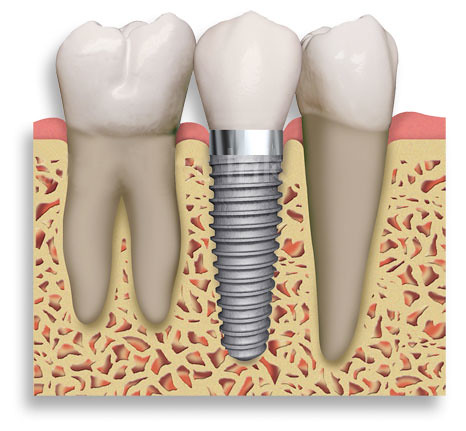 Dental abutments are utilized in various dental procedures, from bridges and partials to implants. The type of dental abutment that you need depends upon the dental procedure that you plan on undergoing as well as your specific dental needs.
Dental abutments are utilized in various dental procedures, from bridges and partials to implants. The type of dental abutment that you need depends upon the dental procedure that you plan on undergoing as well as your specific dental needs.
What Are Dental Abutments?
Dental abutments are fixtures that are used as connecting elements in dentistry. Essentially, they connect the false tooth or teeth to surrounding teeth and hold it in place. The way that each type of dental abutment works is influenced by the type of abutment it is.
Types of Dental Abutments
Bridge Abutments
These abutments are used when dentists place bridges in the mouth. Bridges are essentially sets of one or more false teeth that are positioned where the patient has missing teeth and are secured into the mouth via the teeth on either side of the gap. These abutments are constructed so that the path of insertion of the false teeth is nearly parallel with that of the real teeth that the abutments connect them to.
Partial Denture Abutments
When referring to abutments concerning partial plates, the abutments refer to the unique structures used to hold the partial plate in place within the mouth. Usually, partial plate abutment consist of rest seats and guide planes that wrap around the bottom of the back molar teeth to secure the plate in place.
Implant Abutments
Implant abutments are among the most common types of abutments utilized nowadays. They are prosthetics that are used to connect the implant to the crown or false tooth when patients choose to get dental implants in place of where they have missing teeth. Implant abutments can be made from numerous materials, some of which include titanium, surgical stainless steel, gold and zirconia, which is a white ceramic that has the appearance of a real tooth. Consequently, zirconia is the material that most patients opt for nowadays. Although when putting implants in the molar regions of the mouth, many dentists feel more comfortable using a titanium or stainless steel since they both have a stronger compressive strength than zirconia and won’t be as visible anyways.
Types of Implant Abutments
 There are three primary types of dental implant abutments. The most common is the type that includes a screw butt joint. This screw is installed into the top of the implant, and then the crown is screwed into place atop it to created a three-piece implant. The second type is a two-piece implant that basically has the abutment made into the implant. The crown is then placed atop the abutment. The last type is the dental implant that has the abutment made into it as an integral part of the implant. These types of implants consist of one piece and can usually be placed relatively quickly, in as little as one dental session. The other type types implants require the setting of the implant and then a healing period before the abutment and then crown is attached.
There are three primary types of dental implant abutments. The most common is the type that includes a screw butt joint. This screw is installed into the top of the implant, and then the crown is screwed into place atop it to created a three-piece implant. The second type is a two-piece implant that basically has the abutment made into the implant. The crown is then placed atop the abutment. The last type is the dental implant that has the abutment made into it as an integral part of the implant. These types of implants consist of one piece and can usually be placed relatively quickly, in as little as one dental session. The other type types implants require the setting of the implant and then a healing period before the abutment and then crown is attached.
References:
Medicine Plus. “Orthodontia.” Retrieved on October 23, 2015, from https://www.nlm.nih.gov/medlineplus/orthodontia.html/.
The United States National Library of Medicine National Institutes of Health
8600 Rockville Pike,
Bethesda MD, 20894 USA
1-888-FIND-NLM
http://www.ncbi.nlm.nih.gov
Images:
https://farm9.staticflickr.com/8209/8182065518_57dcf3330a.jpg
https://farm9.staticflickr.com/8184/8117841819_a431e330fe.jpg